Doménikos Theotokópoulos (1541-1614) was the name of a man better known by his nickname, El Greco. He was a painter of Greek origin, even though he spent most of his professional life in Spain, ultimately becoming one of the most famous Mannerist Artists in history.
His style was considered to be so eccentric by his contemporaries that it wasn’t always appreciated by everybody during his lifetime and the centuries following his death. His work eventually managed to inspire expressionists and cubists in the early 20th century, and now he is widely regarded as one of the most influential artists in history.
In this post, we’ve compiled a list of some of the most famous paintings by El Greco, the best part of the oeuvre of an extremely talented individual!
1. Opening of the Fifth Seal
- Date Created: 1608–1614
- Dimensions: 224.8 × 199.4 centimeters (88.5 × 78.5 inches)
- Location: The Metropolitan Museum of Art, New York City, United States
The Opening of the Fifth Seal is also sometimes referred to as “The Fifth Seal of the Apocalypse” or “The Vision of Saint John.” It’s one of the final works of El Greco and depicts a passage in the Bible, Revelation (6:9-11).
It was supposed to decorate an altar in a church just outside of the city walls of Toledo in Spain. It’s considered to be one of the most influential of all of El Greco’s paintings and inspired the likes of Picasso and many other 20th century artists.
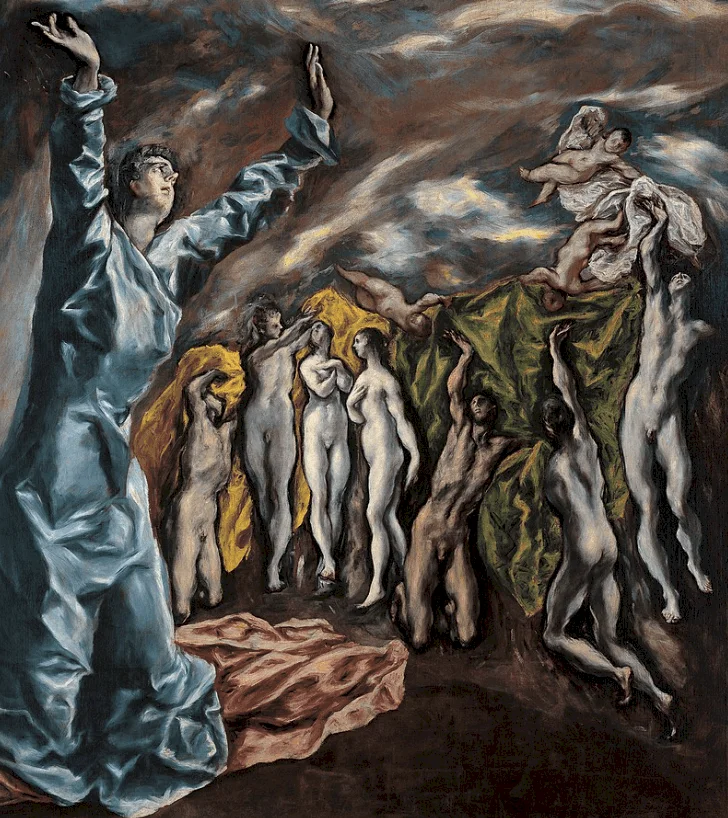
2. View of Toledo
- Date Created: 1596–1600
- Dimensions: 121.3 × 108.6 centimeters (47.8 × 42.8 inches)
- Location: The Metropolitan Museum of Art, New York City, United States
View of Toledo is one of only two surviving landscapes that El Greco has ever created. What makes the work so remarkable is the sky used by the artist, which is considered to be one of the most famous skies in art history.
Together with the sky in “Starry Night” created by the Dutch painter Vincent van Gogh. It also inspired the landscapes of Romantic artist J.M.V. Turner and Impressionist artist Claude Monet.

3. The Burial of the Count of Orgaz
- Date Created: 1586
- Dimensions: 480 × 360 centimeters (190 × 140 inches)
- Location: Iglesia de Santo Tomé, Toledo, Spain
The Burial of the Count of Orgaz has been described as the epitome of El Greco’s artistic style and one of his ultimate masterpieces.
This incredibly large painting has a dual nature as it depicts a heavenly scene above and an earthly scene below, making both scenes converge together perfectly. It depicts a famous legend in which a philanthropic Count was buried by Saint Stephen and Saint Augustine who had descended from heaven.
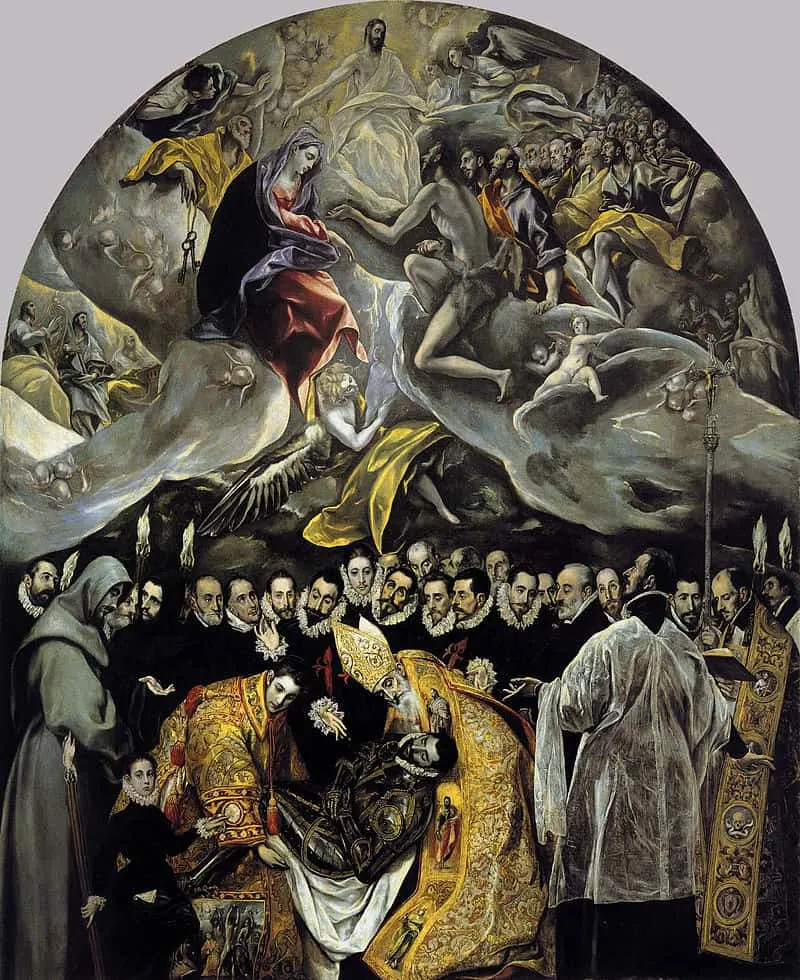
4. The Disrobing of Christ
- Date Created: 1577–1579
- Dimensions: 285 × 173 centimeters (112 × 68 inches)
- Location: Sacristy of Toledo Cathedral, Toledo, Spain
The Disrobing of Christ is a painting that was originally commissioned to decorate the High Altar of the sacristy of the Cathedral of Toledo.
Remarkably, it still hangs in this location since it was completed in the Spring of 1579, apart from a brief period in which the Cathedral was renovated in 2013 and 2014. It depicts Jesus Christ as he looks towards the heavens just before he is about to be disrobed and crucified.
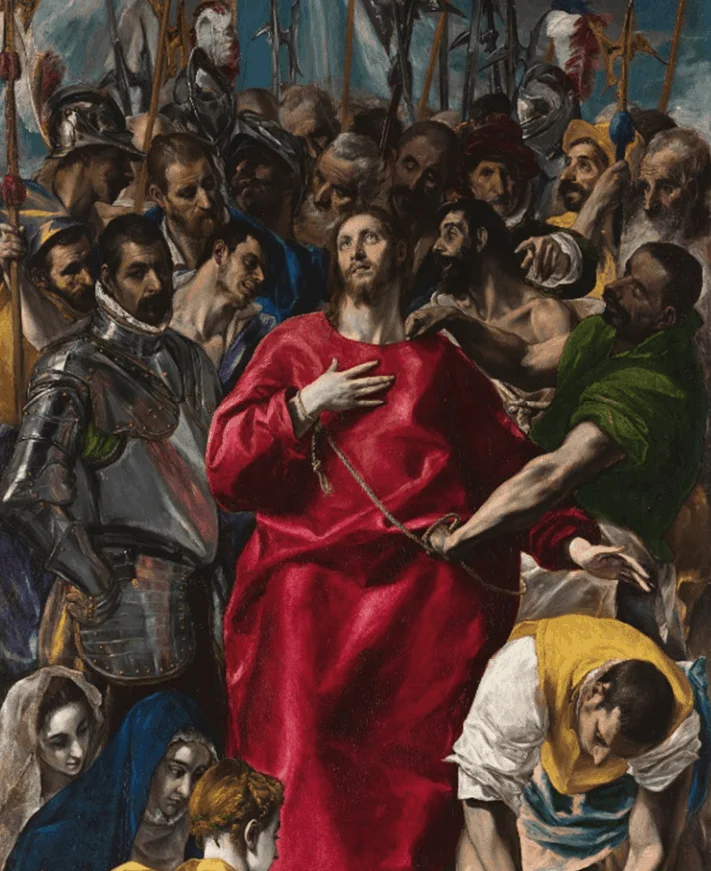
5. The Adoration of the Shepherds
- Date Created: 1612–1614
- Dimensions: 319 × 180 centimeters (126 × 71 inches)
- Location: Museo del Prado, Madrid, Spain
The Adoration of the Shepherds was one of the ultimate paintings that El Greco created as it was completed in the year he passed away. It was intended to decorate the painter’s tomb in the church of Santo Domingo el Antiguo in Toledo.
It depicts the baby Jesus Christ as he shines his light upon the shepherds who have come to pay homage to his birth. El Greco used a strong contrast in light and shadow to increase the dramatic effect of the painting.
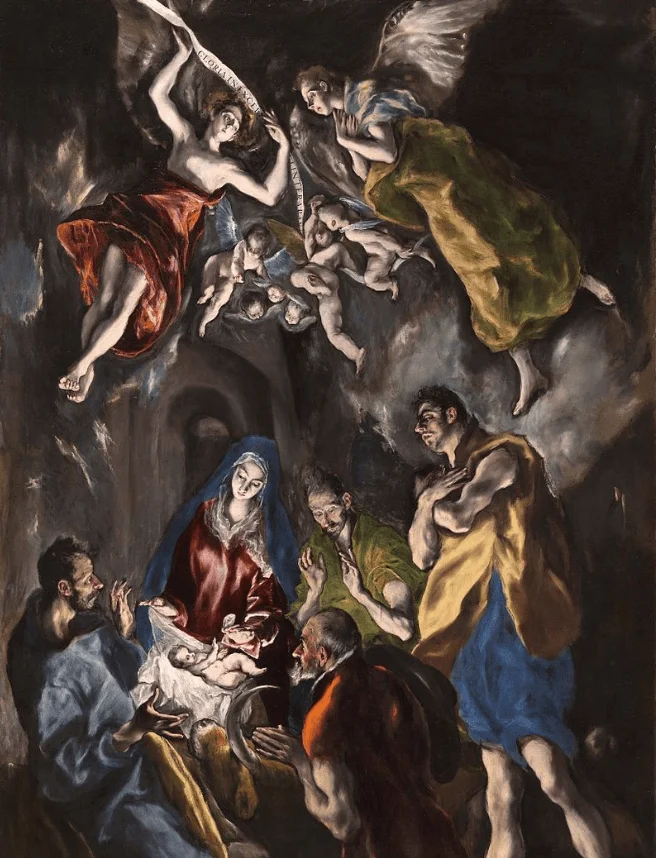
6. The Assumption of the Virgin
- Date Created: 1577
- Dimensions: 403 x 212 centimeters (159.05 x 83.46 inches)
- Location: Art Institute of Chicago, Chicago, United States
The Assumption of the Virgin is another painting that was originally commissioned to decorate the High Altar of the church of Santo Domingo el Antiguo in Toledo.
It was one of the first commissions he received after arriving in Toledo from his periods in Venice and Rome and was part of a series of paintings, including one depicting the Trinity, the Adoration of the Shepherds, and a painting depicting the Resurrection.
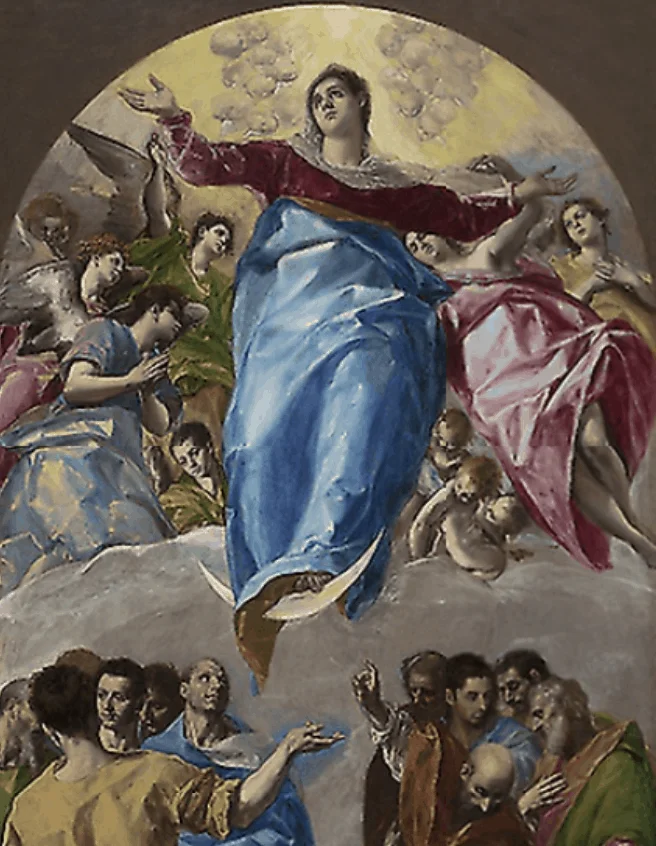
7. Pietà
- Date Created: 1571-1576
- Dimensions: 28.9 × 20 centimeters (11.4 × 7.9 inches)
- Location: Philadelphia Museum of Art, Philadelphia, United States
The Pietà is one of the first paintings El Greco created after arriving in Rome from Venice. The painting was inspired by one of the most famous works by Michelangelo of the same name, the Pietà sculpture on display at the Saint Peter’s Basilica in Rome.
It depicts Jesus Christ in the arms of his mother Mary as she is mourning his death. The main figures are depicted in a triangular shape and there’s a landscape scene in the background.
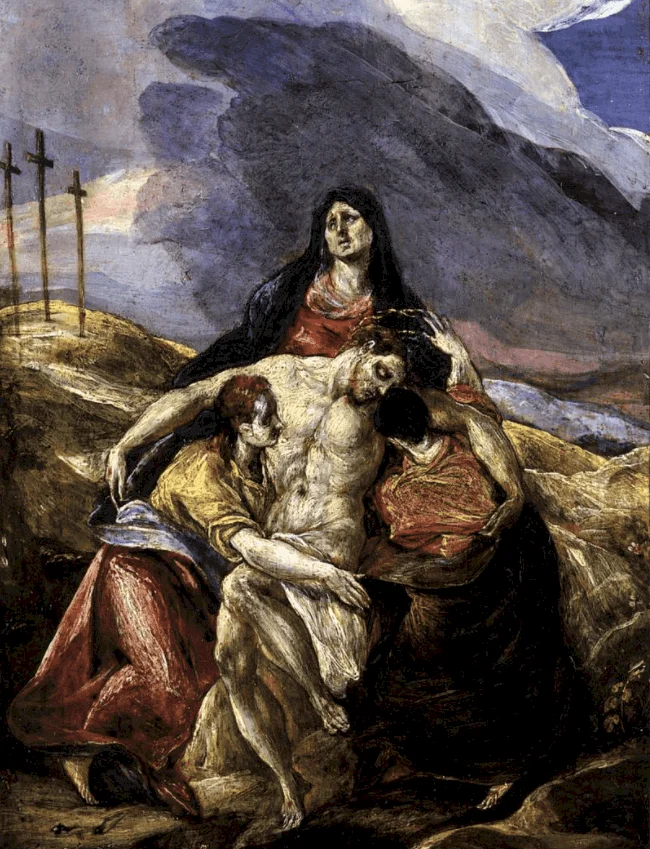
8. Boy Blowing on an Ember
- Date Created: 1571-1572
- Dimensions: 60.5 × 50.5 centimeters (23.8 × 19.9 inches)
- Location: Museo di Capodimonte, Naples, Italy
Boy Blowing on an Ember is also referred to as “El Soplón” and was painted during the early stages of his period in Rome.
El Greco was inspired to create the work after reading Pliny the Elder’s work “Naturalis Historia,” the largest complete work to have survived from the Roman Empire. Even though the origin of the painting is unsure, it’s believed to be a recreation of an Ancient Roman painting.
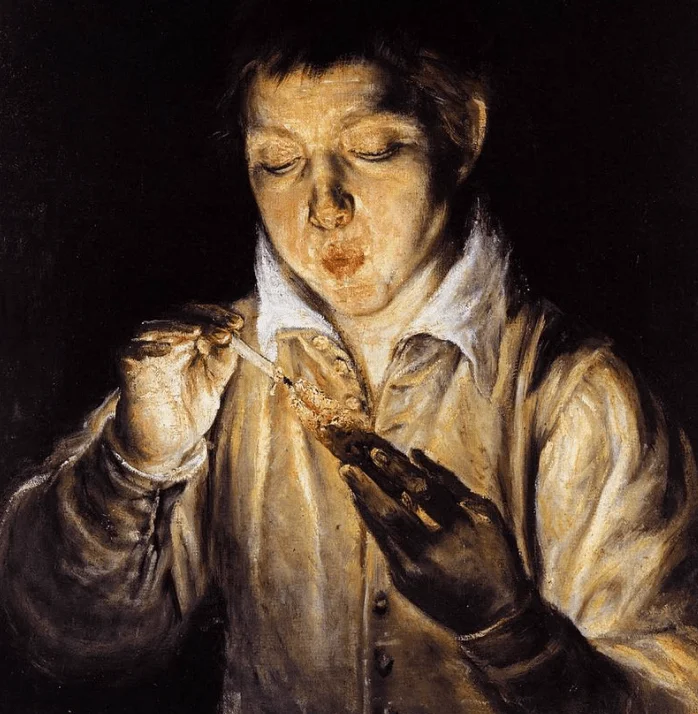
9. The Nobleman with his Hand on his Chest
- Date Created: 1580
- Dimensions: 81.8 × 65.8 centimeters (32.2 × 25.9 inches)
- Location: Museo del Prado, Madrid, Spain
The Nobleman with his Hand on his Chest is also sometimes referred to as “The Gentleman with His Hand at His Breast.” It was painted in the early stages after he arrived in Toledo.
It’s the first painting of a series of gentlemen’s portraits of unknown identities. All of these men are dressed in black and wearing white ruffs, set against a dark background. The identity of the man is still up for debate, with some even claiming it’s a self-portrait.

10. The Holy Trinity
- Date Created: 1577-1579
- Dimensions: 300 x 179 centimeters (118.11 x 70.47 inches)
- Location: Museo del Prado, Madrid, Spain
The Holy Trinity was part of the first commission that El Greco received after he arrived in Toledo and was supposed to decorate the main altarpiece at the church of Santo Domingo el Antiguo in Toledo.
It depicts God as he is holding the body of Jesus Christ on his lap. The colors used by EL Greco in this painting show clear influences from his periods in Venice and Rome. The anatomy of Jesus was influenced by the bodies painted by Michelangelo in Rome.
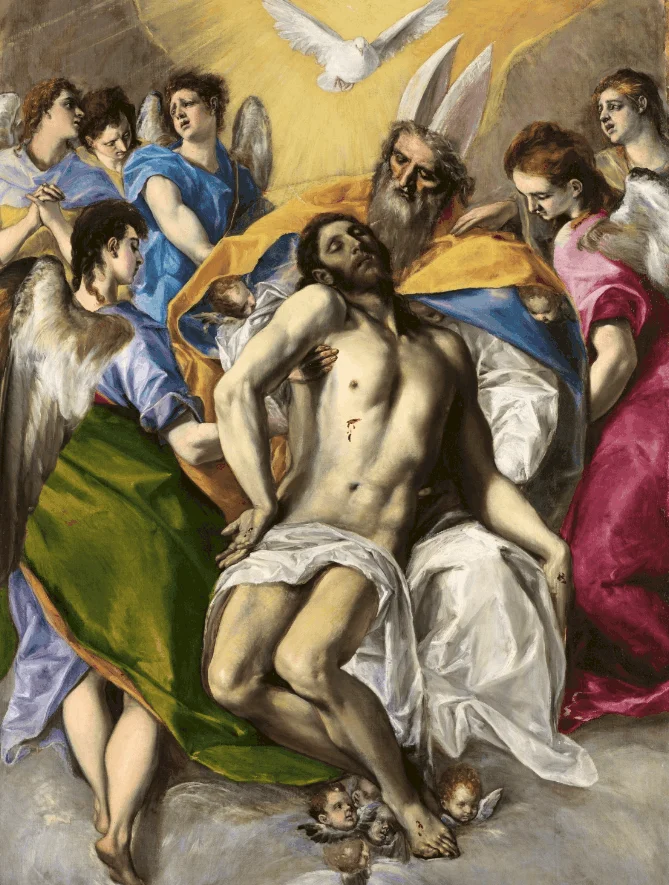
11. Portrait of Fernando Niño de Guevara
- Date Created: 1600
- Dimensions: 170.8 x 108 centimeters (67.25 x 42.5 inches)
- Location: The Metropolitan Museum of Art, New York City, United States
The Portrait of Fernando Niño de Guevara is remarkable in the sense that it wasn’t usual to commission a portrait of one’s self in this period in history.
The man portrayed was Cardinal Guevara who was just promoted to Inquisitor General of Spain. One of his family members likely ordered the painting during a visit of the man to Toledo in the year 1600 to commemorate his promotion.
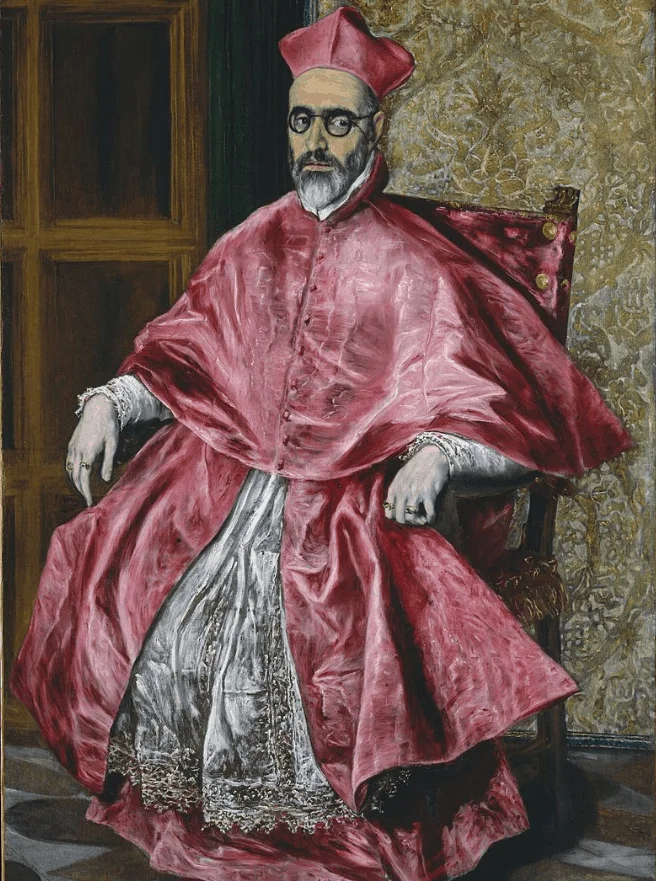
12. Penitent Magdalene
- Date Created: 1576–1578
- Dimensions: 164 × 121 centimeters (65 x 48 inches)
- Location: Museum of Fine Arts, Budapest, Hungary
Penitent Magdalene is another painting produced by El Greco during the early stages after he arrived in Toledo. It depicts Mary Magdalene as she confesses to her sins and becomes the first woman to be forgiven by Jesus Christ.
The influence of famous Renaissance artist Titian is clear in this painting, dating back to his period in Venice. This painting is the original version of this scene. El Greco painted multiple versions of Penitent Magdalene, one of which is in the Worcester Art Museum and another in the Nelson-Atkins Museum of Art in Kansas City.
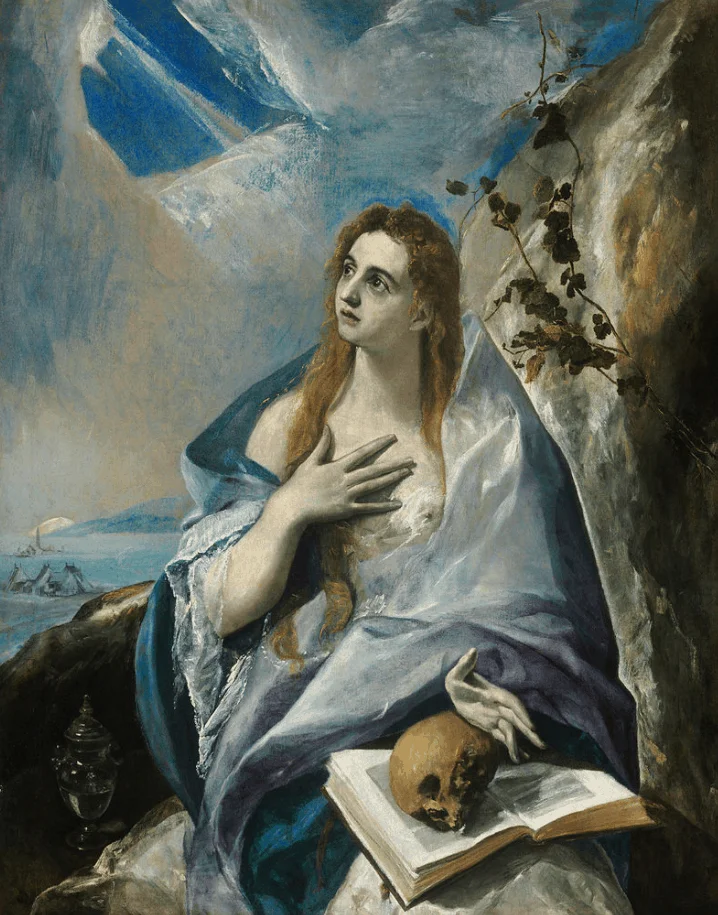
13. Concert of Angels
- Date Created: 1608
- Dimensions: 112 × 205 centimeters (44 × 81 inches)
- Location: National Gallery of Greece, Athens, Greece
Concert of Angels is another one of the paintings created during the final period of the artist. What’s remarkable about this painting is that art historians don’t tend to agree about whether or not the work is finished or part of a study for another painting.
It’s assumed though that this painting is a cutdown of a larger painting, even though nobody knows for sure when this cutting happened.
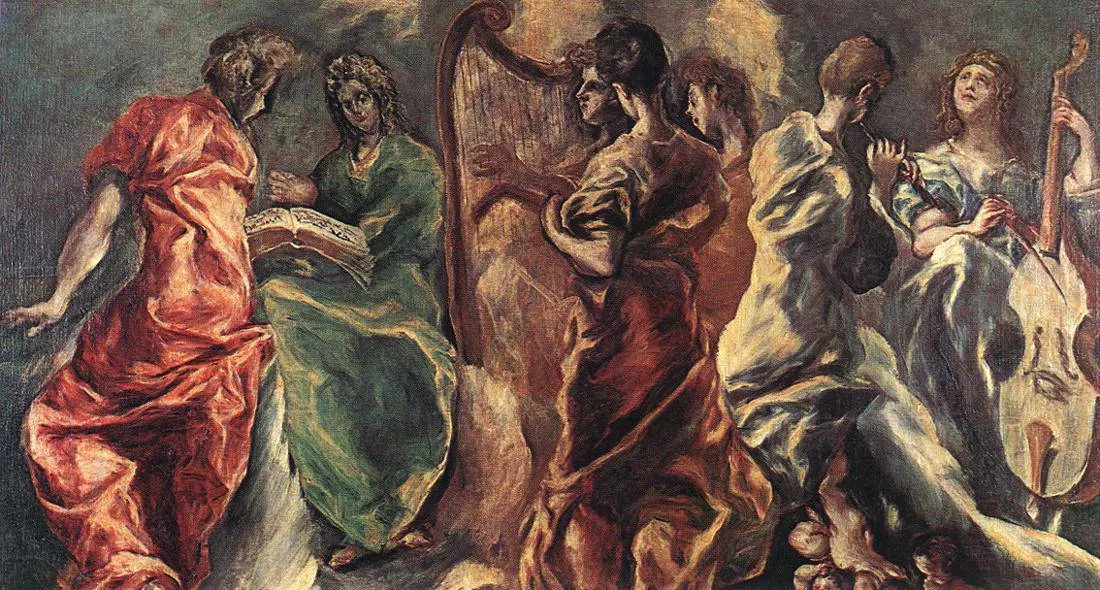
14. Christ Carrying the Cross
- Date Created: 1580
- Dimensions: 105 × 79 centimeters (41 × 31 inches)
- Location: Metropolitan Museum of Art, New York City, United States
Christ Carrying the Cross was created in the early stages of his period in Toledo and depicts Jesus Christ as he is carrying his cross before being crucified.
We see Christ glancing up to the heavens as it appears a storm is brewing in the background. Jesus appears to have tears in his eyes and gently holds the cross just before he is making the ultimate sacrifice for humankind.

15. Saint Sebastian
- Date Created: 1576-1579
- Dimensions: 191 × 152 centimeters (75 × 60 inches)
- Location: Sacristy of the Cathedral, Palencia, Spain
Saint Sebastian is one of the most iconic works of El Greco. It depicts the Martyred Sebastian who was, according to Christian tradition, killed during the reign of Roman Emperor Diocletian, who ruled the Roman Empire between 284 and 305 A.D.
According to the legend, Sebastian was tied to a tree and shot with arrows, only to miraculously heal and survive. He was beaten to death shortly after which is when he achieved his martyrdom. The painting depicts Saint Sebastian in a similar way as to how he was depicted in the Late-Renaissance in Italy, clearly showing his Italian training.

